Dealing with altitude sickness in Leh is the first thing you should ponder over while planning a journey to this part of the Majestic Himalayas. Also known as the “Land of High Passes,” Ladakh is not just a travel destination, it is an adventure travel destination. It presents a traveller with various challenges, especially for the ones visiting the region for the very first time.
Most places in Ladakh are 10000ft or above and altitude sickness is a reality here. Most people travelling over a height of 10000ft or 3000m are likely to feel the symptoms of altitude sickness. Dealing with altitude sickness in Leh requires proper knowledge and precautions.
Through my current blog, I wish to assist you in everything related to altitude sickness in Leh- Ladakh. At the very outset, I want to clarify that I am not a doctor and that all the information in this article is based on my personal experience and discussions with many fellow travellers.
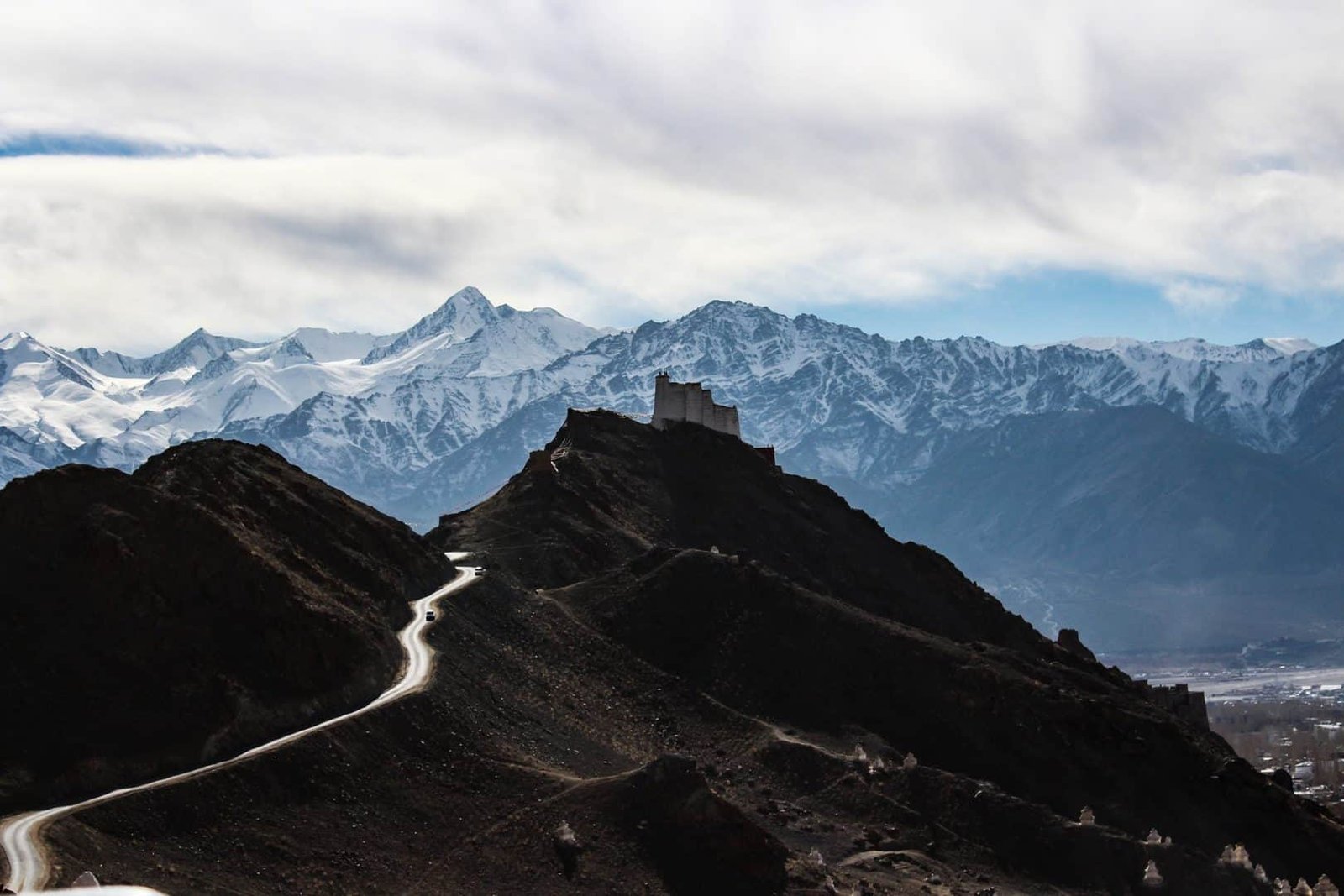
Attitude sickness among travellers visiting Leh Ladakh is very common. It is very important to manage the symptoms, as severe altitude sickness can be very dangerous and in extremely rare conditions, even fatal. So, make sure you prepare well.
Dealing with Altitude Sickness in Leh: Some Key Points
If you really want to explore the region well and not get annoyed by serious symptoms, then learn to deal with altitude sickness in Leh. It is important that you have full awareness of the phenomena and how to tackle it effectively.
| Altitude scale as per Acute Mountain Sickness (AMS) High: 8,000 – 12,000 ft Very High: 12,000 – 18,000 ft Extremely High: 18,000 ft & above |
| Altitude range in Leh 10000 ft -18000 ft (approx.) |
| Highest altitude areas in Leh, Ladakh Khardung La Pass (17,580 ft) Tanglang La (17,480 ft) Changthang (14,846 ft) Tso Moriri (14,836 ft) Pangong Tso (14,270 ft) |
| Medicines to carry Diamox Aspirin/Disprin |
| Time needed for acclimatization in Leh 24-48 hours (1-2 days) |
| Can AMS in Leh be life-threatening? Yes, but in very severe and unattended cases. |
| Altitude at which AMS starts More than 8000 ft |
| Best Route to minimize chances of AMS Srinagar- Leh Highway |
| Time needed for AMS symptoms to subside 2-3 days (Mild AMS) More than 1 week (Severe AMS) |
Dealing with Altitude Sickness in Leh: Commonly Asked Questions by Travelers
There are some very pertinent questions on dealing with altitude sickness in Leh that are posed by most travellers before they venture out in the cold desert.
| 1. What is Altitude Sickness? |
| 2. What is the difference between AMS and altitude sickness? |
| 3. What are the types of Altitude Sickness? |
| 4. What are the symptoms of AMS in Leh? |
| 5. At what height does an AMS start in Leh? |
| 6. What causes Altitude Sickness in Leh? |
| 7. Who is at risk of AMS or Altitude sickness? |
| 8. What is acclimatization and how does it help? |
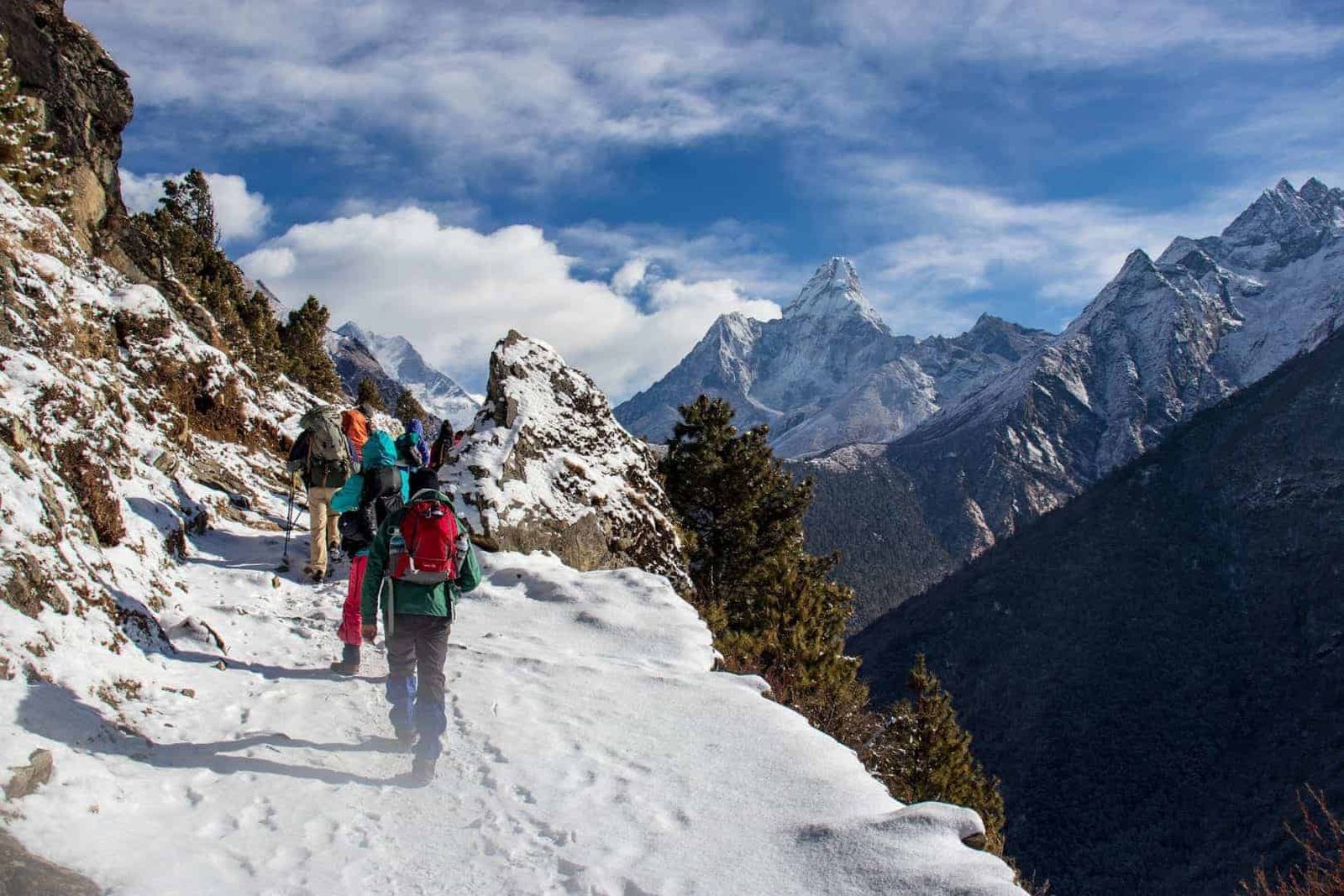
Due to its geography, Ladakh is home to extreme weather conditions. To keep AMS at bay, it is also necessary to dress well. Make sure you’re always dressed in layers and do not have any part of your body exposed (especially in winters).
Dealing with Altitude Sickness in Leh: Commonly Asked Questions Answered
It is very important to answer all the questions that are asked by travellers on dealing with altitude sickness in Leh. Unless you gain some knowledge on the subject, heading to that kind of height is not recommended.
1. What is Altitude Sickness?
Altitude Sickness refers to the symptoms experienced when somebody ascends to a very high altitude in a very short duration, without giving the body proper time to acclimatize. This happens because the body is not able to adapt to the low levels of oxygen at high altitudes.
Altitude sickness is very common in high altitudes. Most occurrences of altitude sickness are mild and heal quickly. In very rare cases, altitude sickness can become severe and cause complications.
2. What is the difference between AMS and Altitude sickness?
Acute Mountain Sickness or AMS, Altitude Sickness, hypobaropathy, altitude bends and soroche are commonly and interchangeably used words to explain sickness caused by high altitude.
3. What are the Types of Altitude Sickness?
AMS or Altitude Sickness can be broadly divided into 2 categories – mild and severe, depending on the severity of the symptoms. While most cases of mild AMS can be self-treated, visiting a doctor is important in case of symptoms of severe AMS.
| Mild AMS is of one type only. |
| Severe AMS can be of two types – HAPE and HACE HAPE stands for High-Altitude Pulmonary Edema HACE stands for High Altitude Cerebral Edema |
4. What are the Symptoms of AMS in Leh?
The symptoms of AMS in Ladakh may start to show depending on the altitude, the rate of ascent, and individual vulnerability. They usually start 6 to 24 hours after arrival at a high altitude destination.
Symptoms of Mild Acute Mountain Sickness in LadakhSymptoms usually get worse at night. Some of the most common ones are as follows: Rise in body temperature Severe headache Chest pain Nausea and Vomiting Lack of sleep Fatigue Dizziness Loss of appetite Increased heart rate Difficulty in breathing Shortness of breath |
Symptoms of Severe Acute Mountain Sickness in LadakhIn case of severe AMS, the above symptoms get worse and in addition to those, you may also experience the following. Coughing Chest congestion Pale complexion and skin discolouration Inability to walk or lack of balance Social withdrawal Coughing up pink or white frothy liquid Irrational behaviour Confusion Convulsions Drowsiness Withdrawal from social interaction Severe altitude sickness is a medical emergency. Someone with severe symptoms should immediately descend to a low altitude and seek medical help. |
The severe symptoms may lead to more severe conditions like High Altitude Pulmonary Oedema, HAPE or High Altitude Cerebral Oedema, HACE.
HAPEIn this form of severe altitude sickness, the lungs are filled with fluid. HAPE usually occurs on the second night after an ascent. It is more frequent in young, fit climbers or trekkers. Symptoms of High Altitude Pulmonary Oedema (HAPE)Extreme fatigue Shortness of breath even while resting Fast, shallow breathing Coughing up frothy or pink liquid Gurgling or rattling breaths Chest congestion Blue or grey lips or fingernails |
HACEIn the case of HACE, the brain swells and ceases to function properly. When HACE progresses rapidly, it can be fatal within a few hours. Symptoms of High Altitude Cerebral Oedema (HACE)Confusion Change in the ability to think Changes in behaviour Lethargy Loss of coordination Imbalance or Inability to walk properly |
5. At what Height does AMS Start in Leh?
Although it depends from person to person, most people start to feel the symptoms of AMS at a height of 10000 ft or above. This means that certain people may start to feel the symptoms in the Leh town itself, while others only when the altitude gets higher.
For people who have never been to higher altitudes, the AMS may set in as soon as they reach Leh and even earlier if they are going by road.
6. What Causes Altitude Sickness in Leh?
Altitude Sickness or AMS happens because of a lower level of oxygen at high altitudes. At higher altitudes, the level of oxygen is less. When you scale such heights, in order to accommodate for low oxygen per breath, your body increases the breathing rate.
When you spend enough time at high altitude, your body gets habituated to low oxygen and you don’t experience any stress or symptoms of AMS at all.
7. Who is at Risk of AMS or Altitude Sickness?
Altitude sickness can happen to anyone. Even the physically fit and athletic people can experience altitude sickness. However, studies show that a woman on her periods and children below 6 are more likely to be hit by AMS.
Apart from this, the likelihood of you experiencing oxygen problems is greater if you live at low altitudes like near the sea and are not used to higher altitudes. People with anaemia, heart or lung disease are also at greater risk.
8. What is Acclimatization and How Does it Help?
Acclimatization refers to the process of giving your body sufficient time to adapt to lower levels of oxygen. A number of changes take place in the body like an increase in the number of RBCs to carry more oxygen, more oxygen release from RBC’s to tissues, deep breathing, increased pulmonary arterial pressure to force blood into nooks and corners of lungs previously not used, etc. This process of acclimatization in Leh generally takes anywhere between 1 to 3 days.
Dealing with Altitude Sickness in Leh: What is the Best Route to Minimize AMS?
The level of altitude sickness is Leh will vary along different routes. It is essential that you have knowledge of the proper route beforehand. Taking a specific route can affect your health significantly.
AMS on Srinagar Leh HighwayThis is the best way to minimize the chances of avoiding AMS. The altitude increases gradually when travelling from Srinagar to Leh. Therefore, your body gets plenty of time to adjust to lower levels of oxygen. You can even stay the night at Kargil if you are concerned about the safety in Leh. |
AMS on Manali Leh HighwayThis is probably not the best choice if you want to prevent AMS in Leh. The Manali Leh Highway will take you through very high-altitude places like Sarchu, Tanglang La, Bharatpur, Pang etc. If you do insist on travelling via this route, make sure you make a stop at Darcha, Keylong or Jispa on the first night and from there, head to Leh the next morning. Do not spend a night at the high-altitude places like Bharatpur (Baralacha La), Pangong Tso, Tso Kar and Tso Moriri Tip: If you wish to do the complete Srinagar- Leh- Manali Circuit, start from Srinagar and end at Manali. |
AMS while Flying to Leh?The next best travel route to avoid altitude sickness in Leh is to reach Leh via a flight. This way, once you land in Leh and are hit by AMS, the symptoms would feel more like a bad hangover. Just make sure that as soon as you reach Leh town, you give yourself adequate time (24-48 hrs) to acclimatize. During this time, make sure you get proper rest and do not exert yourself. Also, please do not spend too much time at the airport clicking pictures and admiring the landscape. Try and reach your accommodation in Leh town as soon as possible, If you are still not convinced, you can choose to stay the first night at a lower altitude than Leh like Alchi or Ule Tolpo. I strongly suggest you take a dose of Diamox 24 hours before landing at Leh airport. |
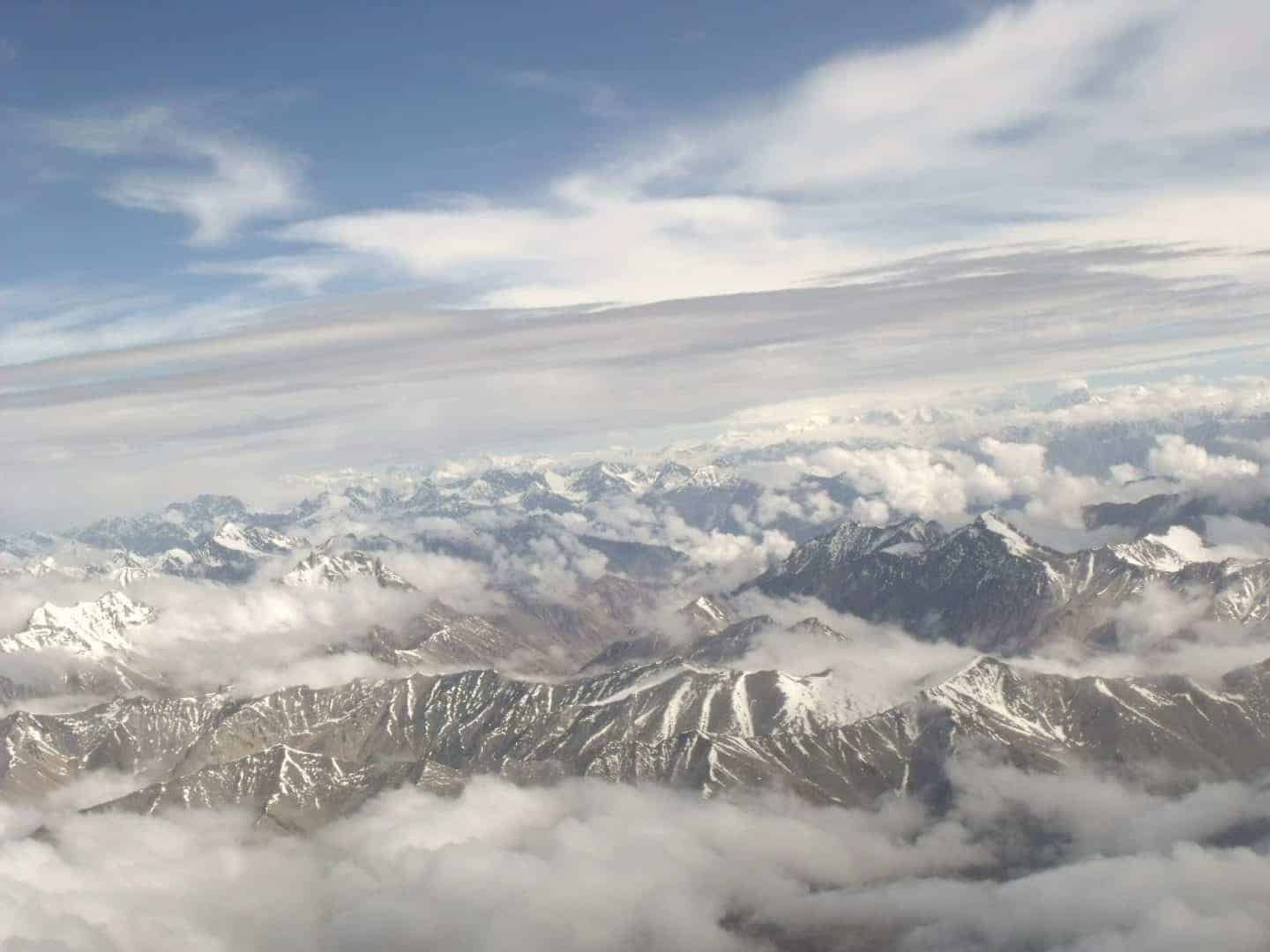
The wonderful views as seen on the flight from Delhi to Leh. One of the ways to avoid altitude sickness is to reach Leh via a flight. This way, once you land in Leh and are hit by AMS, the symptoms would feel more like a bad hangover.
Can AMS be Prevented?
Yes, Acute Mountain Sickness can be prevented by taking care of the following things.
Get AcclimatizedAcclimatization is the most basic way of dealing with altitude sickness in Leh. Once you reach Leh, make sure you give your body enough time to acclimatize before venturing to higher altitudes like Pangong or Nubra Valley. |
Limit your activityThe first 24 hours in Leh are very important for acclimatization. During this time, limit your activity to a bare minimum take proper rest. Ensure that your body is getting proper sleep. |
Sleep at lower altitudesMake sure you do not spend the night at a high altitude location especially for the first couple of days. |
Take a medicineThere are several over the counter medicine available for dealing with altitude sickness in Leh. These medicines increase the breathing rate to cope up with low oxygen levels. Diamox or Acetazolamide is the most popular choice. Take the medicine a day before you visit a high altitude location and continue the dose twice a day for a couple of days more. However, Diamox may have several side effects including numbness and tingling in the fingers and toes, nausea, vomiting and diarrhoea, drowsiness and confusion. Also, you need to understand that Diamox is only precautionary in nature i.e to avoid symptoms of Acute Mountain Sickness. It will not help if you take it only after you start feeling AMS. It is used as a preventive medicine. NOTE: Talk to your physician before popping the pill, especially if you are allergic to Sulphur, are on medication, or suffer from some chronic health condition. |
Don’t Exert YourselfGet proper rest and do not exert yourself physically until your body is fully acclimatized. Even when scaling heights make sure you do not overexert and take rest at proper intervals. |
Avoid Smoking or Drinking AlcoholYou don’t want to reduce the already strained lung capacity by smoking. Drinking can lead to dehydration and dehydration can aid AMS. |
Avoid CaffeineMinimize the intake of caffeinated drinks like tea, coffee or energy drinks. These can cause dehydration and trigger the symptoms of acute mountain sickness. |
Stay Hydrated but avoid too much waterDrink lots of water, it helps to avoid the symptoms of AMS in Ladakh. However, make sure you do not force yourself to drink way too much water. That may cause vomiting. |
Avoid sudden gains in AltitudePlan your trip in a way that you gain altitude slowly. A sudden shift in altitude does not give your body enough time to adjust to the changing oxygen level. This may cause AMS. |
Eat a Good DietEat a high-calorie diet while at altitude. This does not mean eating heavy meals. Take calorie-rich lighter meals. Also, make sure that you eat easily digestible food. |
Avoid Sleeping Pills and Anti-depressantsExcuse yourself from taking sleeping pills and anti-depressants. |
Avoid Turning the Heater onWhile travelling in the car, avoid switching on the heater as much as possible. Using too much of it can trigger the symptoms of AMS. |
Natural Remedies for Dealing with Altitude Sickness in Leh
Nature has bestowed us with organic elements that will help us deal with altitude sickness in Leh the natural way. Here are a few such elements.
GarlicGarlic is very effective in dealing with altitude sickness in Leh. It thins the blood and enhances the blood flow. You can either – Chew 2-3 cloves of garlic, or Drink garlic and lemon water by mixing 2-3 crushed garlic cloves with lemon water. Drink it before you start the ascent. |
GingerGinger is also said to very effective in combating the symptoms of AMS like nausea, dizziness, and vomiting at high altitudes. You can either – Chew some raw ginger or Mix crushed ginger with water and consume it before you start climbing and along the way. |
CloveCloves help the body to be more oxygen-efficient You can add 2-4 crushed cloves in your bottle of water and keep drinking it. |
Lavender OilLavender Oil is a very popular herbal treatment for helping with anxiety, stress, depression, and stress-related headaches. It has a soothing effect on the mind and decreases restlessness. It can help in dealing with altitude sickness in Leh by reducing headaches and discomfort. You can either – Massage a few drops of lavender oil on your head for relief from a headache or Inhale the lavender oil to reduce symptoms of nausea and dizziness |

Natural remedies are the absolute best. It would be a good idea to carry some lavender or peppermint oil on your trip to Ladakh. They have a relaxing effect, reduce headaches and discomfort, and are devoid of any sort of side-effects.
Important Tips for Dealing with Altitude Sickness in Leh Ladakh
As a frequent traveller to the cold desert, I’d like to share some tips without you that will assist you in combating altitude sickness in Leh.
Flying to LehIf you are flying to Leh, and start feeling the symptoms at the airport itself, you can ask for help at the airport itself. Also, avoid spending too much time at the airport and get to your hotel or homestay and get plenty of rest there. |
Book accommodation in advanceLooking for accommodation can be tedious and tiring especially during the peak tourist season. Book accommodation in advance and reach directly at your staying arrangement. Even if you don’t like it very much, stay the night and rest. You can look for it once you are acclimatised. Don’t exhaust your body by searching for new accommodation. |
Climb High, Sleep LowAlways sleep at low altitude than you reached that day. Since the symptoms of AMS tend to get worse at night, this helps you acclimatize gradually. |
Avoid sleeping during the dayYou can assume that you will have difficulty sleeping, especially during the first night on a higher altitude. Take it easy and avoid sleeping during the day. |
Talk to the LocalsLocal people are more experienced with the conditions and problems travellers face in the region. They can give you important anecdotes in dealing with altitude sickness in Leh. |
Sleeping HabitsWhen sleeping, always keep your head higher than a body. Putting a pillow under your head would be helpful. |
Carry and use Natural RemediesCarry and use natural ingredients like cloves, ginger, etc if possible |
Carry medicinesCarry medicines like Diamox to avoid AMS and aspirin, disprin and mild painkillers |
Dealing with Altitude Sickness in Leh Once you Begin to Show Symptoms
Usually, the symptoms of AMS may last anywhere between two days and a week. You can follow the subsequent steps in case you start feeling the symptoms.
Step 1: Stop the ascendStop climbing any higher immediately if you start to feel the symptoms of altitude sickness. Don’t go higher until symptoms decrease. |
Step 2: Take restOnce AMS hits you, give your body sufficient time to adapt and for the symptoms to diminish. |
Step 3: Descend ImmediatelyIf symptoms don’t get better, descend to a lower altitude. You can take medicines such as Disprin/Aspirin to help with the symptoms of AMS like headaches. These medicines also help your blood carry more oxygen. You can also use oxygen through portable oxygen cylinders, which are available easily at chemist shops. These provide you with temporary relief. You can also keep one with you. It is lightweight (around 500gm), and priced at Rs 650. You can also buy them online. |
Step 4: Visit a DoctorIf the symptoms persist or get any worse, visit a doctor immediately. You can visit the Leh Memorial Hospital or Sonam Norboo Memorial Hospital in Leh Town. |
Dealing with Altitude Sickness in Leh at famous Spots
Dealing with altitude sickness in Leh is different for different people. Who will suffer from AMS and where can totally vary from one person to another? However, at popular places like Changthang, Pangong Tso, Tso Moriri, the chances are highest due to very high altitudes.
AMS in Leh Town
You are least likely to be hit by AMS in the town of Leh. However, if you travelled to Leh by air, you may experience slight altitude sickness. Travelling by road gives your body time to adjust to higher altitudes.
Spend at least 24-48 hours in Leh till you are completely acclimatized.
AMS in Nubra Valley
The chances of getting altitude sickness are even lower at Nubra Valley since it is at a lower altitude than Leh city.
AMS at Pangong Tso and Tso Moriri
Both the lakes are situated at a very high altitude and the chances of AMS hitting you increase at such altitudes.
If despite taking all the precautions, you feel the effects of AMS at Pangong Tso or Tso Moriri, do not spend the night here. In this case, you can either head down to Tangtse in case of Pangong lake, or Chumathang in case of Tso Moriri lake.
Although AMS can hit anybody anywhere, there are some areas where there are high chances of suffering from AMS.
| Location & Altitude above sea level |
| Khardung La – 17580 ft or 5359 m |
| Tanglang La – 17,480 ft or 5,328 m |
| Changthang – 14,846 ft or 4240 m |
| Tso Moriri – 14,836 ft or 4,522 m |
| Pangong Tso – 14,270 ft or 4,350 m |
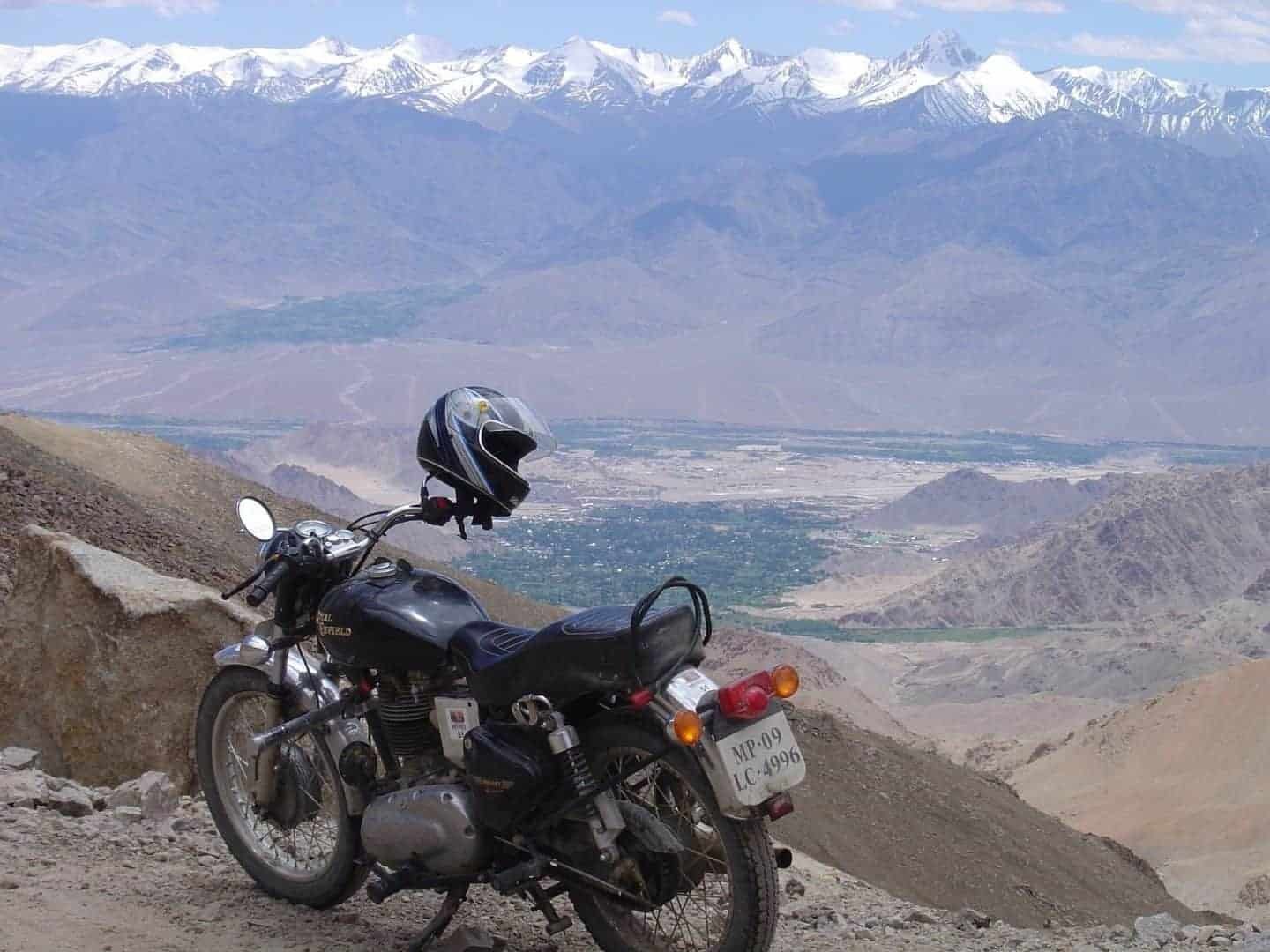
Views from the Khardung La Pass at an elevation of 5359 meters. At places like these, chances of AMS striking are the highest. If you experience symptoms, do not proceed further, and consider descending. Then, get rest or seek medical attention.
Dealing with Altitude Sickness in Leh while Trekking and Camping
Ladakh has some of the most thrilling trekking and camping spots – Alchi Trek, Ripchar Valley Trek. Darcha Trek, to name a few. While you should follow the steps for prevention and tips for dealing with altitude sickness in Leh as described above, here are some extra tips that would help.
Tips for dealing with altitude sickness in Leh when trekking and camping:
If you are planning to trek and camp, you need to be extra careful about dealing with AMS. Here are a few tips.
Avoid OverexertionAvoid any kind of activities that may exhaust you, especially 24 hours before the trek. |
Take it slowDon’t overexert in the initial stages of your hike. Ascend slowly and give yourself time to acclimatize. |
Climb high, sleep lowSleep at a lower elevation than you have ascended during the day. Try not to drastically increase your sleeping altitude. Try to keep it to around 300 m a day. |
Stop the ascentOnce you start feeling the symptoms of AMS, stop climbing any further. Rest for a day or two and then start the ascent. |
Pressure breathingTry pressure breathing or high altitude breathing. This is a technique to increase the amount of carbon dioxide as you exhale. Purse your lips and then exhale forcefully. This allows easier oxygen exchange in your lungs. |
Stay away from AlcoholAvoid alcohol, tobacco, caffeinated drinks, nicotine, sleeping pills, antidepressants, antihistamines, both prior to and during the trek. |
Carry Oxygen CylindersCarry an oxygen cylinder with you. It is lightweight (around 500gm), and priced at Rs 650. It is easily available in the market in Leh. You can also buy them online. |
Dealing with Altitude Sickness in Leh in case of Children
Dealing with Altitude Sickness in Leh can become more tedious in case of kids. It is generally considered safe for kids over the age of 1 to visit Leh if the kid is healthy and not born prematurely. Make sure you never travel with a baby less than 3 months old.
Since very young children are not able to communicate the symptoms properly, you need to be very vigilant in order to identify the signs of AMS.
Tips for Dealing with Altitude Sickness in Leh with Kids
When travelling with kids, take care of the following:
Talk to your doctorBefore heading out to your Leh adventure, visit the paediatrician for a professional opinion. This becomes more important in the case of children who were born prematurely or kids suffering from a chronic heart or lung disease, or any systemic disease. The doctor may suggest some medicines. Carry these from your home itself, and always keep them ready when exploring high altitudes regions. |
Ascend very slowlyYou must ascend or gain altitude slowly to allow proper acclimatization. |
Keep the Child HydratedYou must keep him/her properly hydrated by watching out for proper liquid intake and feeding including water. However, do not force them to over drink as it may trigger vomiting. You can also mix some electrolyte replacement solution in water, and give your child frequent sips of water to prevent dehydration. |
Spend less time at high altitudesTry to cut short your time at high altitudes. This means that you should avoid spending a night at high altitude places like Tso Moriri or Pangong Lake if you are travelling with a kid. |
Avoid travelling on bad weather daysTry to avoid travelling to high altitudes on bad weather days. Also, make sure that the child is warm. |
Avoid the Leh- Manali HighwayAs discussed, the Leh Manali highway has plenty of altitudes spikes that can trigger AMS, so it’s better to avoid it when travelling with kids |
Notice distress signsThe most important tip for dealing with altitude sickness in Leh among kids is to be aware of the distress signs a child displays. Some signs to look out for in your child are – Increased Irritability and crying Breathing distress Headache Dizziness or Fatigue Trouble eating Trouble sleeping Nausea and Vomiting Change in skin colour to pale or blue If your child is showing these signs, descend immediately or get medical help from some army camp nearby. |
Proper BreathingEncourage your child to do some deep breathing. Ask the child to breathe more deeply and at a slightly faster rate than normal, to get more oxygen into the lungs. |
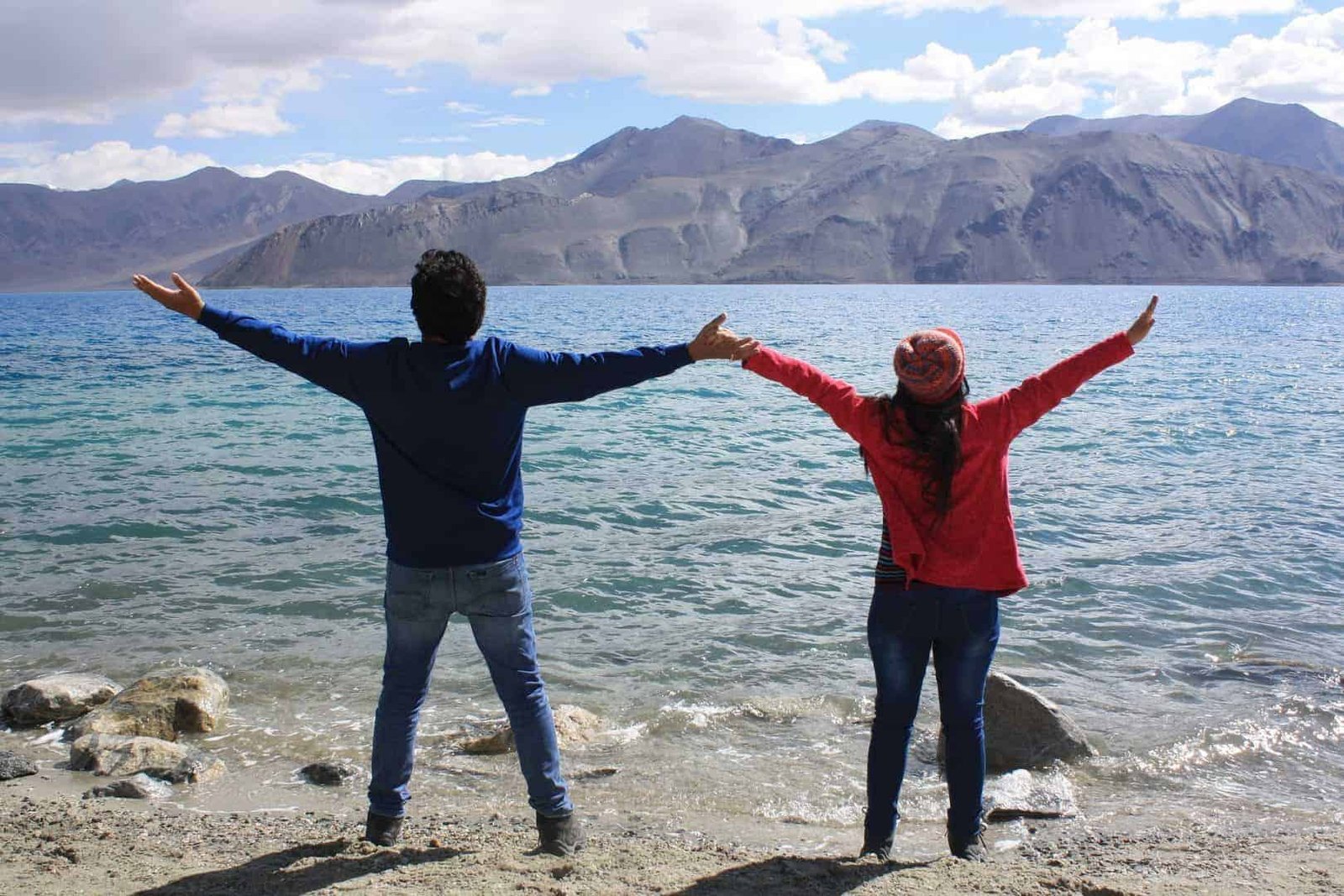
In case you’re intimidated by now, don’t be. Always remember that it’s all about preparing well and being ready for the worst. Furthermore, locals in Ladakh are really experienced and helpful when it comes to such situations. So, just go for it!
Dealing with Altitude Sickness in Leh in case of the Elderly
If you are travelling with an elderly person or are an elderly person, do not visit the area without proper health assessment from a doctor. Children and older adults are generally at an increased risk of getting altitude sickness because it takes their bodies longer to adjust.
Tips for Dealing with Altitude Sickness in Leh in case of the Elderly
If travelling with elderly people, ensure that you are following the following precautions.
Visit a DoctorIf you are suffering from any heart condition or Asthmatic problems, consult your doctor before you head out to Leh. Dealing with altitude sickness in Leh can be a problem for elderly with chronic conditions. |
Carry essential MedicinesDo not forget to carry all the prescription medicines and other medicines including the altitude sickness medicines. Consult your doctor about whether the medicines can be taken along with your other medicines or not. |
Pack warm clothesSince it can get very cold at nights, pack adequate warm clothes for the trip. Keep jackets, woollen caps and gloves handy. |
Avoid the wintersAlthough Leh is splendid during winters, the elderly with health conditions should avoid visiting Leh during this time. It gets very cold and the stay arrangements also might not be very up to the mark. |
Acclimatize WellMake sure seniors have adequate time to acclimatize to high altitudes. |
Staying arrangementsMake sure the staying arrangements are proper. Avoid spending a night at very high altitudes |
Ascend SlowlyAvoid any kind of strenuous activity like hiking or trekking. |
Visit Army Base Camps for Basic First AidThere are army base caps after almost every 15-20kms. You can visit any of these in case of any basic medical help. |
EmergencyIn case of emergencies head back to Leh to the Leh Memorial Hospital. This hospital is equipped to deal with emergencies. |
Dealing with Altitude Sickness in Leh for people with Different Diseases and Conditions
For most people who have heart or lung disease, dealing with altitude sickness in Leh can be easy if your condition is under control.
High altitudes can, however, be unsafe for people who have sickle cell anaemia, chronic obstructive pulmonary disease (COPD), severe emphysema or severe heart disease. Being overweight just adds to the risk factors.
Tips for Dealing with Altitude Sickness in Leh for People with Different Health Conditions
As a traveller, you might be fighting an existing health condition. Do follow some important tips in order to deal with altitude sickness in Leh.
Visit your DoctorIf you are suffering from any heart condition or any chronic disease, consult your doctor before you head out to Leh. Pregnant women should also consult their doctors if they plan on travelling to Leh Ladakh. |
Carry essential MedicinesDo not forget to carry all the prescription medicines and other medicines including the altitude sickness medicines. Consult your doctor about whether the medicines can be taken along with your other medicines or not |
Acclimatize WellMake sure you have adequate time to acclimatize to high altitudes. |
Staying arrangementsMake sure the staying arrangements are proper. Avoid spending a night at very high altitudes |
Ascend SlowlyAvoid any kind of strenuous activity like hiking or trekking |
Visit Army Base Camps for Basic First AidThere are army base caps after almost every 15-20 km. You can visit any of these in case of any basic medical help. |
EmergencyIn case of emergencies head back to Leh to the Leh Memorial Hospital. This hospital is equipped to deal with emergencies. |
Dealing with Altitude Sickness in Leh: What Other Precautions can you Take?
There are certain precautions that should be followed if you truly want to deal with altitude sickness in Leh region.
| Avoid spending too much time at high altitude passes |
| Drink water at regular intervals. Mix some glucose or electrolyte replacement solution in water to keep your energy levels up and to stay hydrated. |
| Take frequent breaks and avoid overexerting yourself |
| Avoid overeating and eat light but frequent meals. |
| If you or a fellow traveller shows symptoms of severe altitude sickness, immediately take them to a hospital or an army base if you are a long way from the hospital. |
| Before heading out to Leh, get a complete physical check-up to make sure you have no serious health issues. |
| Carry portable oxygen cylinders available online and at chemist shops. |
Dealing with altitude sickness in Leh can be easy if proper planning is involved. Make sure you consider all the risk factors and follow all the prevention tips. Leh can be an extraordinary adventure destination that could leave you with tons of beautiful memories.
Happy Wayfaring.

